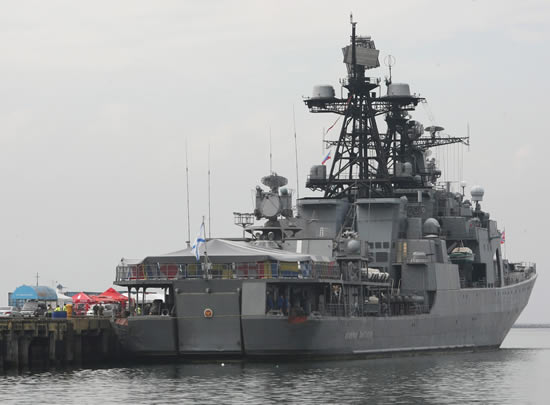On March 28, Vladimir Putin, returning home from the BRICS (Brazil, Russia, India, and China) Durban summit, ordered Minister of Defense Sergei Shoigu to mobilize the Black Sea Fleet—immediately. More than 7,000 troops, and some 36 warships, 250 armored vehicles, 50 cannons, and as many as 20 fighter jets were launched into action, as neighbors worried that the rapid mobilization of Russian forces was a prelude to war.
Russia was flexing its naval muscle to show its relevance in the region. As part of the new “Putin Doctrine,” it wants to project power, increase its global influence, and displace U.S. leadership wherever it can. Presidential spokesman Dmitry Peskov said that Putin ordered the naval maneuvers to test the country’s military readiness. It was all just an exercise.
Nevertheless, Russia’s Black Sea neighbors were not happy with the unannounced drills. Georgia’s Ministry of Foreign Affairs released a statement expressing “grave concern” over the exercise, which “runs contrary to the interests of stability and predictability in the European neighborhood.” Kommersant reports that Ukrainian members of parliament objected to the exercise, and a high-ranking NATO source said that Russia’s actions were not consistent with the new tone of cooperation between the alliance and Russia.
Making Russia’s neighbors worry fits Putin’s new foreign policy concept, which states that Russia will maintain “its high standing in the international community as one of the influential and competitive poles of the modern world.”
The Kremlin believes that Russian power, including its military might, should be maintained and modernized. The $800 billion armed services revamp and massive military exercises are two pillars of this effort. As the Russian navy has considerably deteriorated since the Cold War, Moscow will need as much to overcome the “degradation” of its aging fleet.
By conducting the Black Sea Fleet maneuvers, Russia is trying to signal the South Caucasus and the Middle East, as well as NATO, that it is still a force to be reckoned with. The Black Sea Fleet, which had its last ship commissioned in 1992, has responsibilities for the Mediterranean and the Indian Ocean.
Russia’s naval “smoke signals” come at a time when President Obama is cutting the U.S. military budget and giving ground on missile defense to Russia—with no reciprocation in sight.
The Russian exercise was no prelude to war, but it is symbolic of Putin’s desire to return to the glory of the Soviet blue water navy, or at least build up sufficient naval power to be taken seriously, especially in the Eastern Mediterranean, where tensions are rising around Syria and between Turkey and Cyprus, the latter being a Russian friend and offshore banker.
While seriously underpowered in the world ocean compared to NATO, Moscow is spending its ample oil revenue on naval modernization. It is commissioning eight Borei-class submarine-launched missile carriers, eight more attack nuclear submarines, and is considering building a new nuclear-powered aircraft carrier.
Russia, almost always a formidable land power, now has a naval agenda that goes beyond a purely defensive, coastal deployment. U.S. force structure planners and naval budget experts should take notice.
Benjamin Tigay is currently a member of the Young Leaders Program at The Heritage Foundation. For more information on interning at Heritage, please click here.
